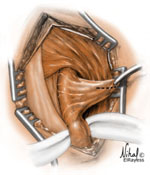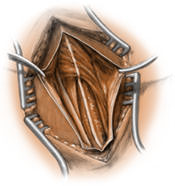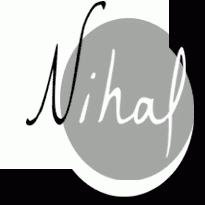I coined this phrase (I’m pretty sure?) years ago to try to explain how I think to friends.
I process information and fairly immediately form a visual in my head. I have a knack for visualizing complicated information for the express purpose of communicating — often across diverse stakeholders and usually in order to help make decisions. The visuals you see on my site don’t take me too long (aside from the actual medical illustrations)… seriously!
So, I’m often asked how I went from graduate studies in Medical Illustration to product-related disciplines such as information architecture, user experience, business analysis, process and program design, and everything in between. Or better said, do I think there’s any connection between such seemingly varied disciplines?
First, I have always been a visual thinker, long predating my graduate work… I assume from birth. The art of mastering medical illustration added disciplined, intentional considerations for thinking this way, as well as, very physical dimensions compared to the often conceptual dimensions inherent in creating new technology or designing process or developing a vision.
The Surgery Theater
 The Assignment: Attend an inguinal hernia surgical procedure in the O.R. with the goal of illustrating the procedure for surgical resident training. (Sidenote: Show up at 5 a.m., be bright-eyed and bushy-tailed, and bring a fully alert brain.)
The Assignment: Attend an inguinal hernia surgical procedure in the O.R. with the goal of illustrating the procedure for surgical resident training. (Sidenote: Show up at 5 a.m., be bright-eyed and bushy-tailed, and bring a fully alert brain.)
The Set Up: Stand across the operating table from the surgeon and behind those assisting (don’t worry a stool will be provided), limit your questions (or in many cases, stay silent), but the surgeon will narrate what’s going on as much as possible. (It goes without saying, scrubbing in, and hospital procedural items were on the list too.)
Huh? Across the table? Now what???
Gathering Insights, Analysis, Data, and Information
The actual time spent in the O.R. was about observing, gathering information… basically classic analysis. Primary methods and activities were (surprise, surprise!) mostly writing notes. Sketches were quick and rough, focused on where instruments were going and how they were held — quick sequenced information. Photos? They can’t eliminate the blood, so no, those tend to be minimally helpful for the future illustration details, but can give more accurate rough orientation to the body, area of the body, and are definitely helpful as reference points for drawing instruments accurately. And, by the way, I did prepare before showing up. Much like market research I had learned a bit about the procedure, studied up on the anatomy, and talked to the surgeon.
3D Thinking in Action
 Back at my desk with all my raw information, I got to work. I pulled up anatomy textbooks and texts to serve as my guides in portraying accuracy. But my brain would have to flip all my notes, quick sketches and orient them from the view of the surgeon who was actually across the table. And I might even have to flip the anatomy textbook illustrations as well. I’m sure I don’t need to remind you that our bodies aren’t perfectly symmetrical, so I couldn’t just render and then “flip horizontally.” I also had to decide whether to position the drawings as the body was (the surgeon standing beside the patient) or flip it upright. I had to consider what a learner would expect and how they would best process the communicated image.
Back at my desk with all my raw information, I got to work. I pulled up anatomy textbooks and texts to serve as my guides in portraying accuracy. But my brain would have to flip all my notes, quick sketches and orient them from the view of the surgeon who was actually across the table. And I might even have to flip the anatomy textbook illustrations as well. I’m sure I don’t need to remind you that our bodies aren’t perfectly symmetrical, so I couldn’t just render and then “flip horizontally.” I also had to decide whether to position the drawings as the body was (the surgeon standing beside the patient) or flip it upright. I had to consider what a learner would expect and how they would best process the communicated image.
This very act of “flipping” a physical image or viewpoint in service of effectively getting across information is what led me to start calling this way of communicating “thinking in 3D.”
3D Thinking Applied Elsewhere
I’d like to think 3D Thinking isn’t so far from “empathy” which gets a lot of play these days. This way of seeing things from varied perspectives perhaps even 360 degrees, whether it is physical or conceptual, is really about connecting to audience and ultimately about communicating. It is also about being aware that there are multiple perspectives — perhaps true understanding comes from engaging in those multiple perspectives. It transcends any one field or discipline and can be applied broadly. Practice with the physical world, I believe, trained my brain to make something already somewhat natural more tangible and easy to apply intuitively to more conceptual work.
If my theory holds — that this discipline has sharpened my 3D Thinking — and you’d like to try it, perhaps choose a non-symmetrical object and try to draw it as though you are looking from a different vantage point. And keep practicing.
